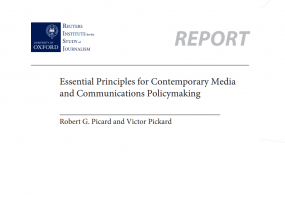Polarisation and the news media in Europe
Many people are concerned that the news media is exacerbating a polarisation of people's attitudes across Europe. This report reviews and summarises the recent available literature connecting polarisation and the news media.
The key findings that emerge from this literature are as follows:
- Across Europe there is as yet little evidence to support the idea that increased exposure to news featuring like-minded or opposing views leads to the widespread polarisation of attitudes. Although some studies have found that both can strengthen the attitudes of a minority who already hold strong views.
- Most studies of news use on social media have failed to find evidence of echo chambers and/or 'filter bubbles', where people are over-exposed to like-minded views. Some studies even find evidence that it increases the likelihood of exposure to opposing views.
- The extent to which people self-select news sources in Europe based on their political preferences, as well as the extent to which news outlets produce partisan coverage, still varies greatly by country.
- In addition to differences between European countries, comparative research often tends to show that the United States of America has much higher levels of partisan news production, consumption and polarisation, making it difficult to generalise from these findings.
- There are large gaps in our understanding of the relationship between the news media and polarisation, particularly outside Western and Northern Europe, and particularly concerning our knowledge of new, more partisan digital-born news sources.
This report was written for the European Parliament's Panel for the Future of Science and Technology (STOA).







